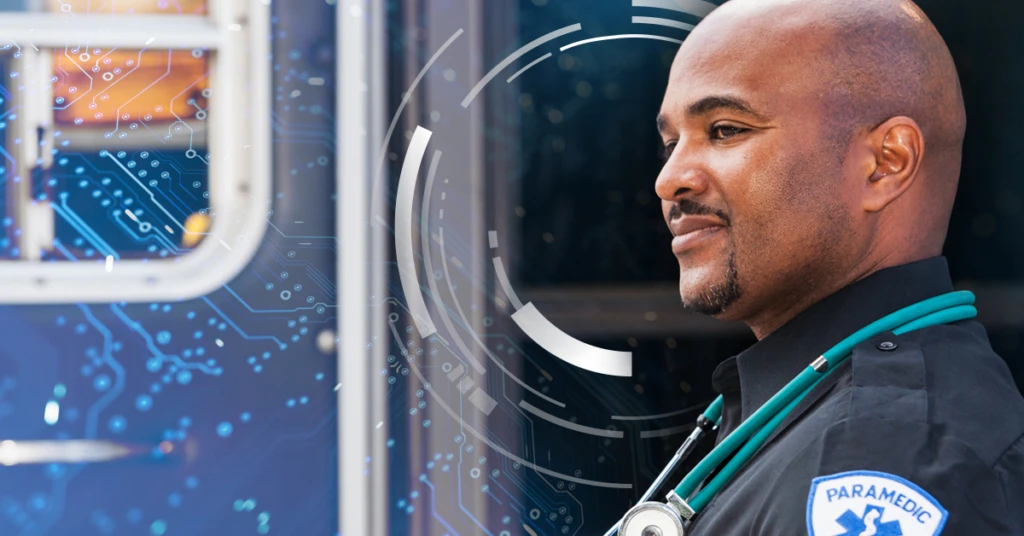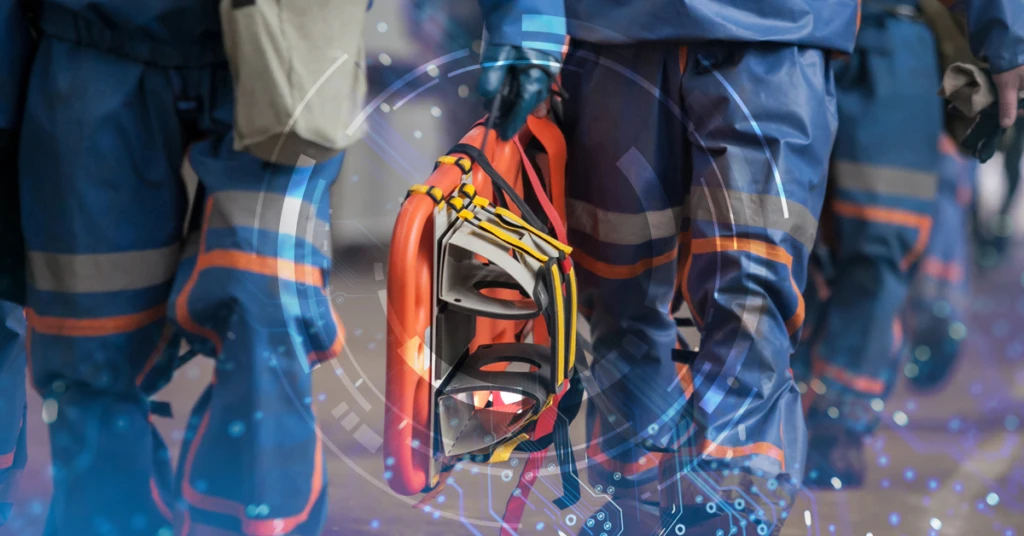
Department of Energy announces the First Five Consortium
When disaster hits or the unexpected befalls a community, First Responders are on the frontlines of compassionate, strategic response. Now, a new federal consortium aims to support First Responders in doing the highly valuable work they do to protect and repair lands and communities experiencing a crisis. Microsoft is proud to help lead this innovative initiative.
On August 18, 2020, the U.S. Department of Energy (DOE) Artificial Intelligence and Technology Office (AITO) announced the creation of the First Five Consortium (First Five). The consortium is named in acknowledgment of how critical the first five minutes are in recognizing the type and scale of a disaster or hazardous incident, activating the appropriate response system, and managing the event—typically the role of First Responders.
Microsoft is co-chair of this initiative that was formed in response to the January 2020 White House Executive Forum focused on Humanitarian Assistance and Disaster Response (HADR). As part of this cross-cut of industry, government, non-profit, and academia, we have pledged our in-kind support to help develop solutions that will improve the impact mitigation of national disasters in the United States. In 2019 alone, there were 14 disasters that caused over $1B each in damage.
DOE, in concert with the Pacific Northwest National Laboratory, is currently scaling a prototype initially developed by the DoD Joint Artificial Intelligence Center (JAIC) that uses deep learning algorithms to provide near real-time data to improve the decision making of our nation’s First Responders.

Delivering near real-time information to First Responders
Getting the right information to the right people at the right time is critical in helping to mitigate disasters. Cheryl Ingstad, Director, AITO, said, “AITO is proud to lead the development of these lines of effort that will get near real-time information into the hands of our First Responders, and allow them to save lives, protect assets and our nation’s resources. This is just one project of what we know will be many contributions from all our partners using technology to increase the HADR response in our nation.”
Since 2019, the JAIC has led the development of AI capability through its National Mission Initiatives.
To support this work, Microsoft recently established a critical infrastructure team to help secure the nation’s key systems, services, and functions essential to the operation of American society and its economy. Comprehensive signal collection, together with data modelling, hold huge promise for forecasting and detecting early signs of coming disasters. The development of life-saving AI algorithms can help responders better target their aid and make for a faster and safer response. The team will explore avenues to use artificial intelligence, confidential computing, modernized communications, distributed systems, and cybersecurity to improve disaster resilience, collaborating with the Department of Energy, Defense, and others.

Activating the potential to save lives
“Artificial intelligence enables us to address some of humanity’s greatest challenges, and in this case, improve disaster resilience for populations around the world,” said Toni Townes-Whitley, president of US Regulated Industries, Microsoft. “As evidenced by this consortium we have joined with the DoE and DoD, it’s critical that private and public sectors work together to provide first responders with technology that has the potential to save lives.”
The selected projects will apply artificial intelligence and deep learning methodologies to address a variety of research and development areas, including:
- Wildfire prediction and fire line containment.
- Damage assessment – ingress and egress routes for impacted areas.
- Search and rescue.
- Natural disasters including hurricanes and tornadoes.
Getting involved in the First Five
For more information, organizations that are interested in being part of the consortium or have design ideas and need resources can submit requests at the First Five Portal. The portal will also allow the First Responder community to submit problem sets and use cases where they believe that artificial intelligence can advance their mission. The portal will also allow the First Responder community to submit problem sets and use cases where they believe that artificial intelligence can advance their mission.
For a look at some early project successes, download Into the Storm: Using artificial intelligence to improve California’s disaster resilience. Microsoft was pleased to sponsor this report with the Partnership for Public Service. You’ll learn how AI can support disaster resilience, a process that includes preparedness, response, recovery, mitigation, and adaptation.




